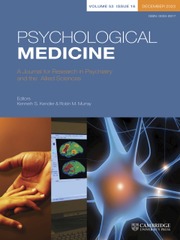
“Purpose: The recreational and medical use of cannabis is being legalized worldwide. Its use has been linked to an increased risk of developing opioid use disorders. As opioids continue to be prescribed after total hip arthroplasty (THA), the influence that preoperative cannabis use may have on postoperative opioid consumption remains unknown. The purpose of this study was to assess the relationship between preoperative cannabis use and opioid utilization following primary THA.
Methods: We identified all patients over the age of 18 who underwent unilateral, primary THA for a diagnosis of osteoarthritis at a single institution from February 2019 to April 2021. Our cohort was grouped into current cannabis users (within 6 months of surgery) and those who reported never using cannabis. One hundred and fifty-six current users were propensity score matched 1:6 with 936 never users based on age, sex, BMI, history of chronic pain, smoking status, history of anxiety/depression, ASA classification and type of anesthesia. Outcomes included inpatient and postdischarge opioid use in morphine milligram equivalents.
Results: Total inpatient opioid utilization, opioids refilled, and total opioids used within 90 postoperative days were similar between the groups.
Conclusion: In propensity score matched analyses, preoperative cannabis use was not independently associated with an increase in inpatient or outpatient, 90-days opioid consumption following elective THA.”
https://pubmed.ncbi.nlm.nih.gov/36129515/
https://link.springer.com/article/10.1007/s00402-022-04619-7








